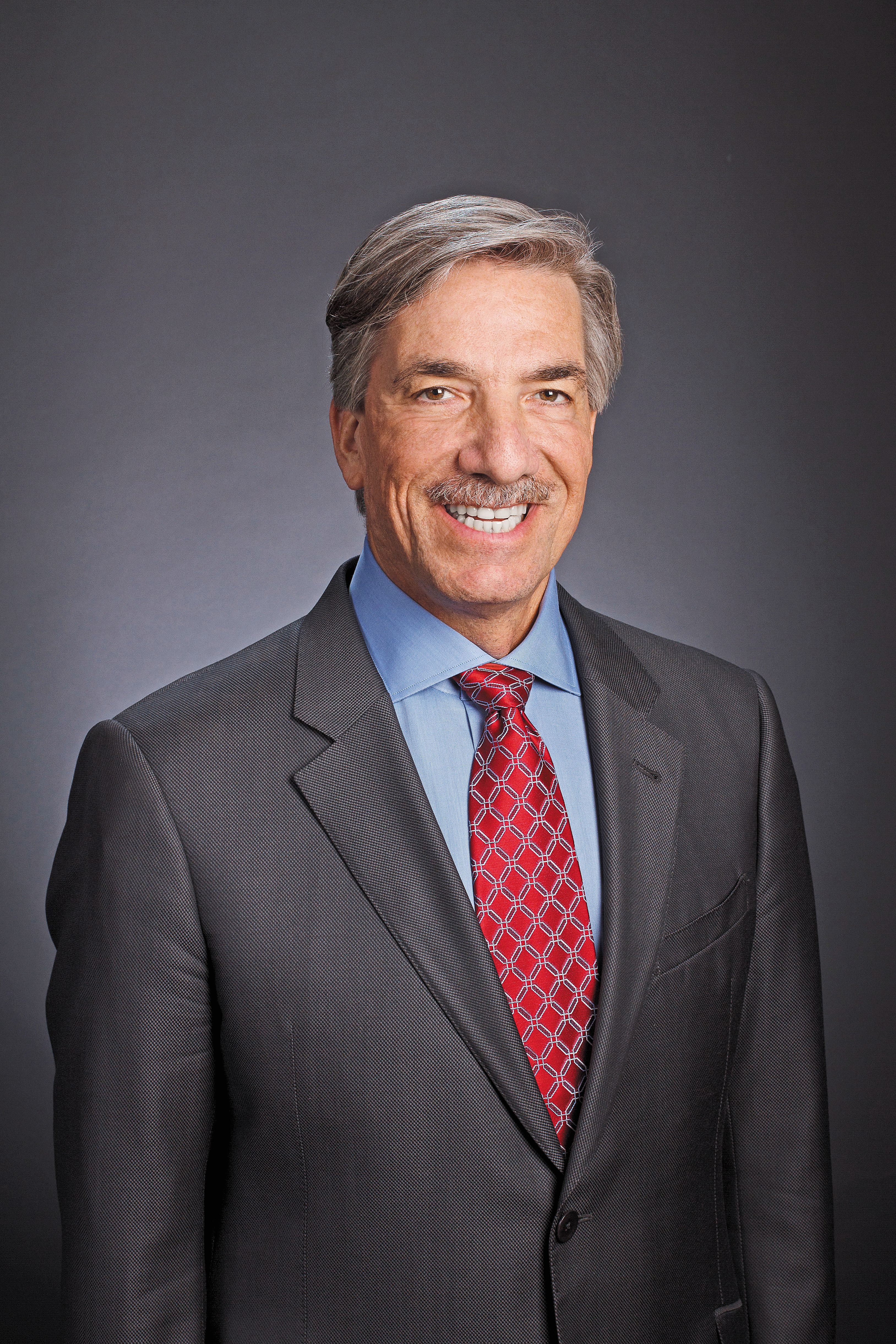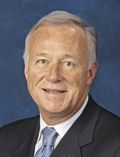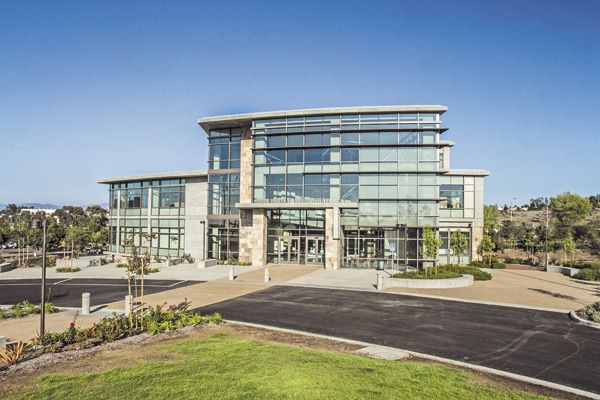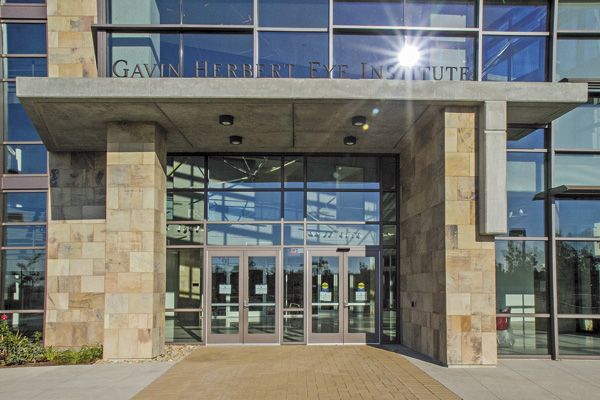Article
UC Irvine unveils new eye health institute
A new, 70,000-square-foot eye institute, which was funded entirely by community philanthropy, opened in September at the University of California, Irvine campus.
Take Home:
A new, 70,000-square-foot eye institute, which was funded entirely by community philanthropy, opened in September at the University of California, Irvine campus.

James MazzoBy Rose Schneider, Content Specialist, Ophthalmology Times
Irvine, CA-More than 10 years in the making, the Gavin Herbert Eye Institute has opened its doors at the University of California (UC), Irvine campus.
The $39 million, 70,000-square-foot institute, which opened in September, was built in order to provide cutting-edge technologies, educational programs, and research to amplify visual health for its patients, said James Mazzo, chairman of the Gavin Herbert Eye Institute steering committee.
It treats across all specialties of ophthalmology and offers comprehensive eye care ranging from annual screening exams to complex surgeries, as well as access to clinical trials.
There are 24 physicians, surgeons, and researchers at the institute.
“Its premise is based on research, . . . leading-edge research,” said Mazzo, who is also a UC Irvine Foundation trustee and operating partner with Versant Ventures, a Newport Beach-based venture capital firm.
Studying treatments-such as stem cell therapies to preserve and restore eyesight for patients with retinitis pigmentosa and age-related macular degeneration, as well as a vaccine for ocular herpes-are just some of the research components the institute will focus on, according to UC Irvine.
The institute will have a corneal tissue bank on site as well, which Mazzo said is “very unique” for an eye institution.
“I doubt many teaching institutes in our field have (a corneal tissue bank),” he said.
All of these components, Mazzo said, are “the key differentiating factors” which make the Gavin Herbert Eye Institute stand out among the nation’s other eye health institutions.
“At the end of the day, we deal with debilitating eye diseases. No one wants the loss of vision, because it reduces their independence,” he said. “The ability to improve eye sight, the ability to have people maintain their independence, the ability to find cures, is really the critical nature (for why) we need research.”

Dr. Steinert

Gavin Herbert Eye Institute, which is part of UC Irvine Health, moves into its new 70,000-square-foot home on the UC Irvine campus in September. The building includes 34 patient exam rooms with the latest in optical equipment, the first campus outpatient surgery center, a dedicated pediatric examination area, an optical shop, faculty offices, and conference space. (Photo Courtesy of UC Irvine Health/Photo by Cy Kuckenbaker)
Technology and layout
Another aspect of the new building is its innovative technology and construction make-up, which Roger Steinert, MD, said aims at optimizing effective patient care.
“The most important factor is that the new institute created an opportunity for us to take the technology -- in the sense of equipment --- and combine it with what we’ve learned about efficient patient care and effective education all in one building,” said Dr. Steinert, who is the institute’s founding director.
Those innovations range from newly designed and managed operating rooms to the latest diagnostic, imaging, and laser treatment technology on the market, said Dr. Steinert, who is also chairman of the UC Irvine Department of Ophthalmology, Irving H. Leopold Professor of Ophthalmology, and professor of biomedical engineering.
New technology, he said, includes high-definition (HD) video, which ophthalmologists use to record surgeries and which are automatically stored for up to 3 months for future examination or case studies and can be edited by the surgeons in their offices. The new system also allows those surgeries to be broadcast live in HD internally into teaching spaces at the institute for students, as well as on the Internet.
There is touchscreen equipment in every room throughout the institute as well, such as controls for lighting, music, and microscopes.
To optimize the patients’ experience while at the institute, Dr. Steinert said the main clinic floor tracks all patients through electronic records so “patients can feel confident about the security and portability of their records.”
The floor was also designed to be “user friendly,” he said, so patients can better navigate through the building.
“It’s extremely exciting to have the opportunity to create this type of environment,” Dr. Steinert said.

A suspended dichroic glass sculpture, created by Portland, Oregon artist Ed Carpenter, animates the Gavin Herbert Eye Institute lobby through its interaction with natural and artificial light. This arrangement yields views from all three floors of the building, creating a feeling of light play that reinforces the institute’s mission to enhance eye health and performance. (Photo courtesy of UC Irvine Health/Photo by Cy Kuckenbaker)
Backstory
The institute began as an idea 11 years ago, when Mazzo-along with several colleagues who later formed the institute’s steering committee-decided there was a “need to create a leading institute here in Orange County,” Mazzo said.
“We have Orange County here with so many (eye-care) companies, but there wasn’t really any teaching institution or research facility we found that coordinated our efforts” Mazzo said. “We really wanted something in our backyard.”
While he believes the new institute’s innovative focus on research is one of its best qualities, Mazzo said the ability to raise $39 million through philanthropy alone to build the institute will be remembered as an achievement.
“It’s sure to be a hallmark,” he said. “The university donated the land. But, we didn’t get any public money for construction. Every dollar given to us was all through philanthropy.”
Major donors include: Gavin Herbert, Founder and Chairman Emeritus of Allergan-who provided the initial naming gift in 2007-Abbott Medical Optics Inc., the Alcon Foundation, the Allergan Foundation, and Bausch + Lomb.
“We’re obviously quite proud of what everybody has contributed, both in time and money. It’s been going on now for 10 years,” he said. “We’re all in this business and we love what we do . . . it’s a great feeling.”

Gavin Herbert Eye Institute is located on the UC Irvine campus in Orange County, a community that is home to many corporate and local offices of ophthalmology-related device and pharmaceutical companies and an area that many refer to as the global epicenter of eye technology. (Photo courtesy of UC Irvine Health/Photo by Cy Kuckenbaker)
Looking toward the future
Both Mazzo and Dr. Steinert said they could not be more excited the institute is finally open.
“It’s a bit surreal after 10 years,” Mazzo said. “It’s definitely something that I’m very proud to be a part of.”
But while the building is finished and patients are now being seen, Mazzo insisted there is still more work ahead.
“Any research facility is never done,” he said.
Looking at where industry and the eye institute may intersect on research, Mazzo said, he anticipates there will be more efforts in retina, glaucoma, dry eye, presbyopia, and other debilitating diseases.
Because the building is also a teaching facility, Mazzo said there will be a focus on expanding that programming as well.
“The more young ophthalmologists we create, the better,” he said.
Mazzo also hopes to expand the institute’s reach overseas.
“We can cross-fertilize and have a big impact beyond Orange County, beyond California, beyond the United States, and have a world impact,” he said.
James Mazzo
Mazzo currently serves as Chairman and CEO of Versant portfolio company AcuFocus, which specializes in corneal inlays.
Roger Steinert, MD
Subscribe to Ophthalmology Times to receive the latest clinical news and updates for ophthalmologists.
Features
· Ambulatory surgery center with two operating suites and a laser cataract procedure room
· An 8,000-square-foot eye clinic with multiple laser procedure rooms and cutting-edge diagnostic imaging technology
· Translational clinical research center for innovative therapy trials
· Thirty-four exam rooms, 4 of which are dedicated to pediatrics
· LASIK refractive surgery center
· Oculofacial plastic surgery center with dedicated procedure room
· More than 1,500 square feet of conference and educational space
· Optical shop with one full-time optometrist, one part-time optometrist, and two opticians
Newsletter
Don’t miss out—get Ophthalmology Times updates on the latest clinical advancements and expert interviews, straight to your inbox.




